Eadweard Muybridge: A Pioneer in Art and Science
Determined to capture movement in a manner previously hidden to the human eye, Eadweard Muybridge will forever have a place in history as a pioneer of photography and science.
In 1872, former Governor of California Leland Stanford asked Eadweard Muybridge, a well-known Californian photographer, to take pictures of his horse Occident trotting at full speed. Stanford wanted to settle a bet, for which he’d wagered that all four hooves were off the ground at once as a horse trots. Although Muybridge's first photographs were inconclusive, the photographer designed an improved shutter that would work at the incredible speed of one-thousandth of a second.
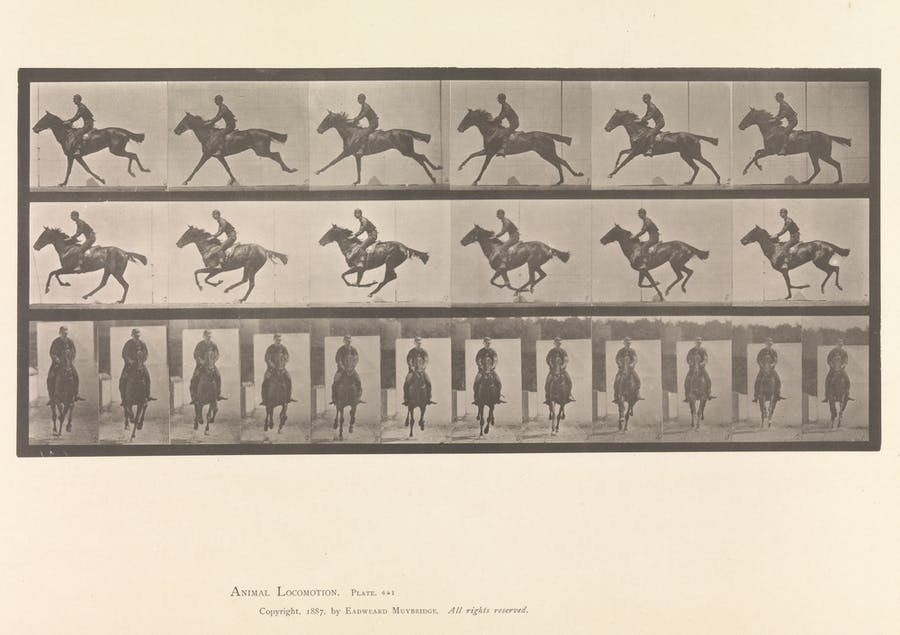
Using 12 cameras each hooked to a machine that would trip the shutters as the horse galloped by, Muybridge was able to take the first pictures of an animal in motion. His design proved that, as Stanford had bet, a horse did lift all its four legs while trotting. In July 1877, he published the image of Occident in arrested motion. The image caused quite a stir: neither art and science had ever seen such photographs.
Related: The 11 Most Expensive Photographers
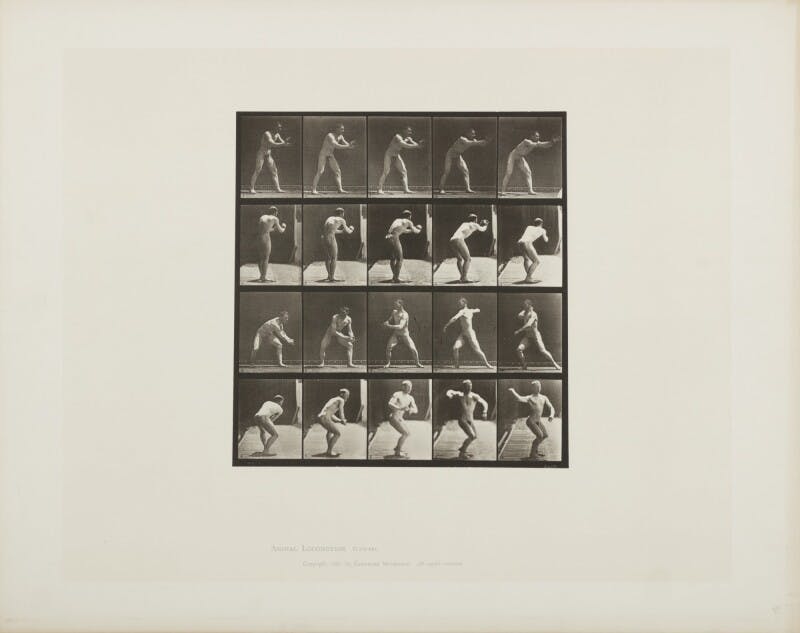
Spurred on by his pioneering success and growing fame, he later expanded his apparatus to 24 cameras, allowing him to capture animals' movements with incredible precision. In 1879, he invented the 'zoopraxiscope', a machine that enabled the projection of up to 200 single images on a screen. The following year, he presented the moving pictures on a screen for the first time at the California School of Fine Arts, effectively inventing motion pictures.
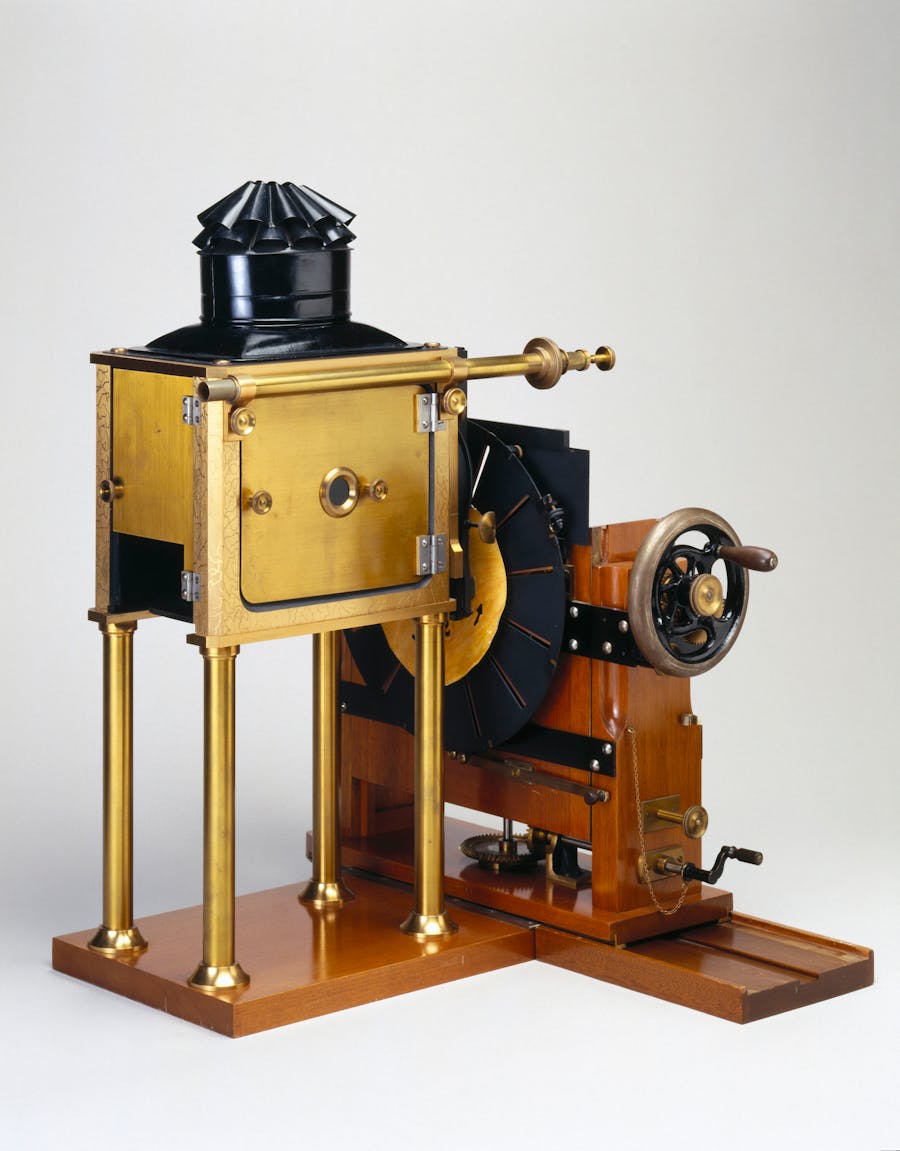
In the 1880s, Muybridge accepted a commission from the University of Pennsylvania to conduct research into studying the movement of animals and humans. The human models, either entirely nude or only lightly clothed, were photographed against a measured grid background in a variety of action sequences, including walking up or down stairs, hammering on an anvil, carrying buckets, or pouring water over each other.
Related: Wilhelm von Gloeden and the Nude Men of Taormina
Eventually, Muybridge was able to produce thousands of images of animals and humans in motion, capturing what the human eye could not distinguish as separate movements. Over the course of three years, from 1884 to 1885, more than 100,000 images were created. 781 of these plates were published by the University of Pennsylvania under the title Animal Locomotion, in a series of 11 volumes.
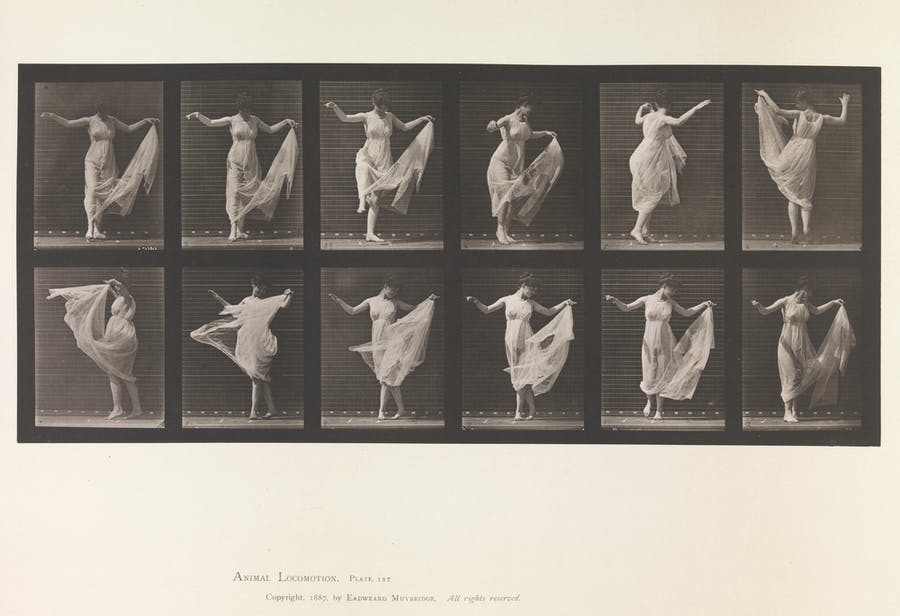
His influence was widely recognized by scientists and artists such as Thomas Eakins, William Dickson, Thomas Edison, Marcel Duchamp, Harold Edgerton, Francis Bacon, and others, all of whom acknowledged their debt to Muybridge's pioneering work.
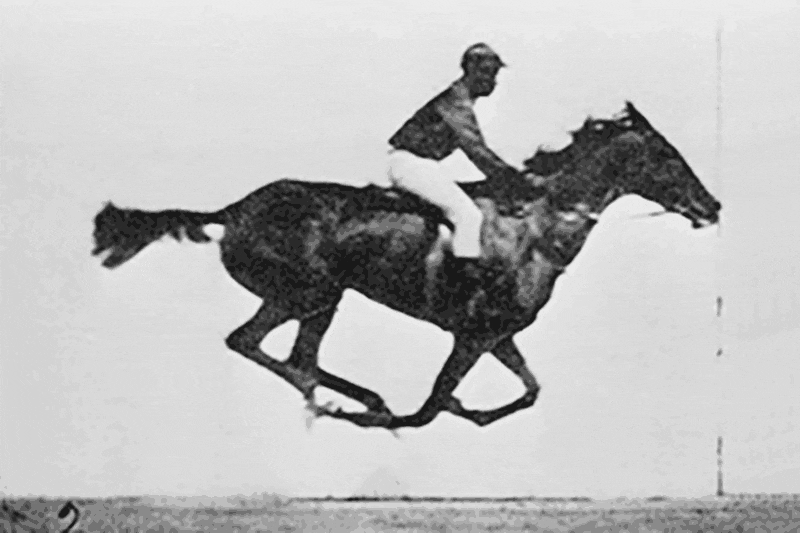
Want more articles straight to your inbox? Sign up to our newsletter here!
Although he thought of himself primarily as an artist, he also saw the scientific and commercial aspects of his inventions. He spent much of his late years giving public lectures and demonstrations of his photography and early motion picture sequences. The ‘zoopraxiscope’ practically invented film as an early movie projector, pre-dating the flexible perforated film strip used in cinematography.


